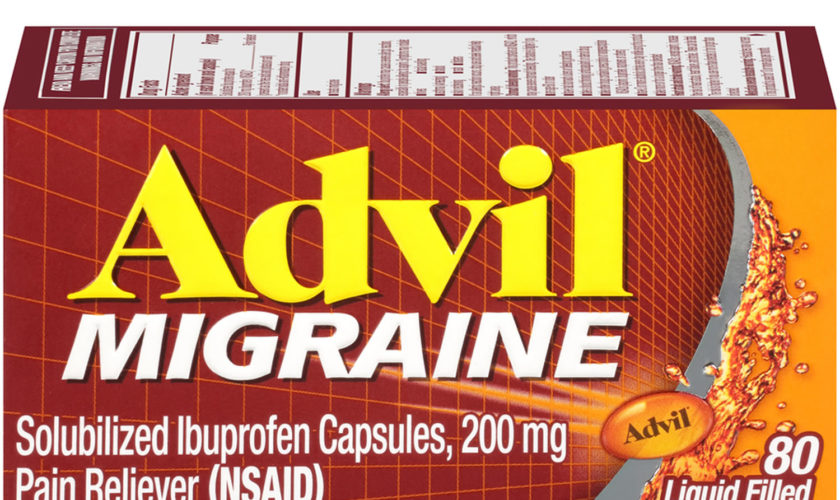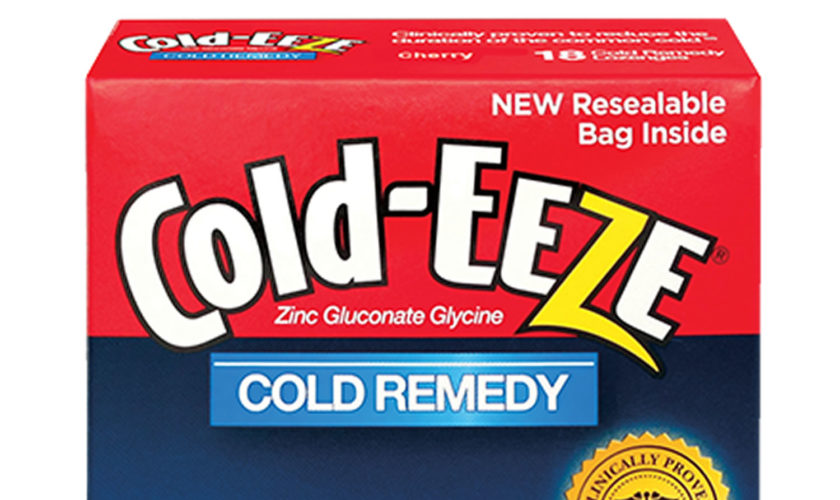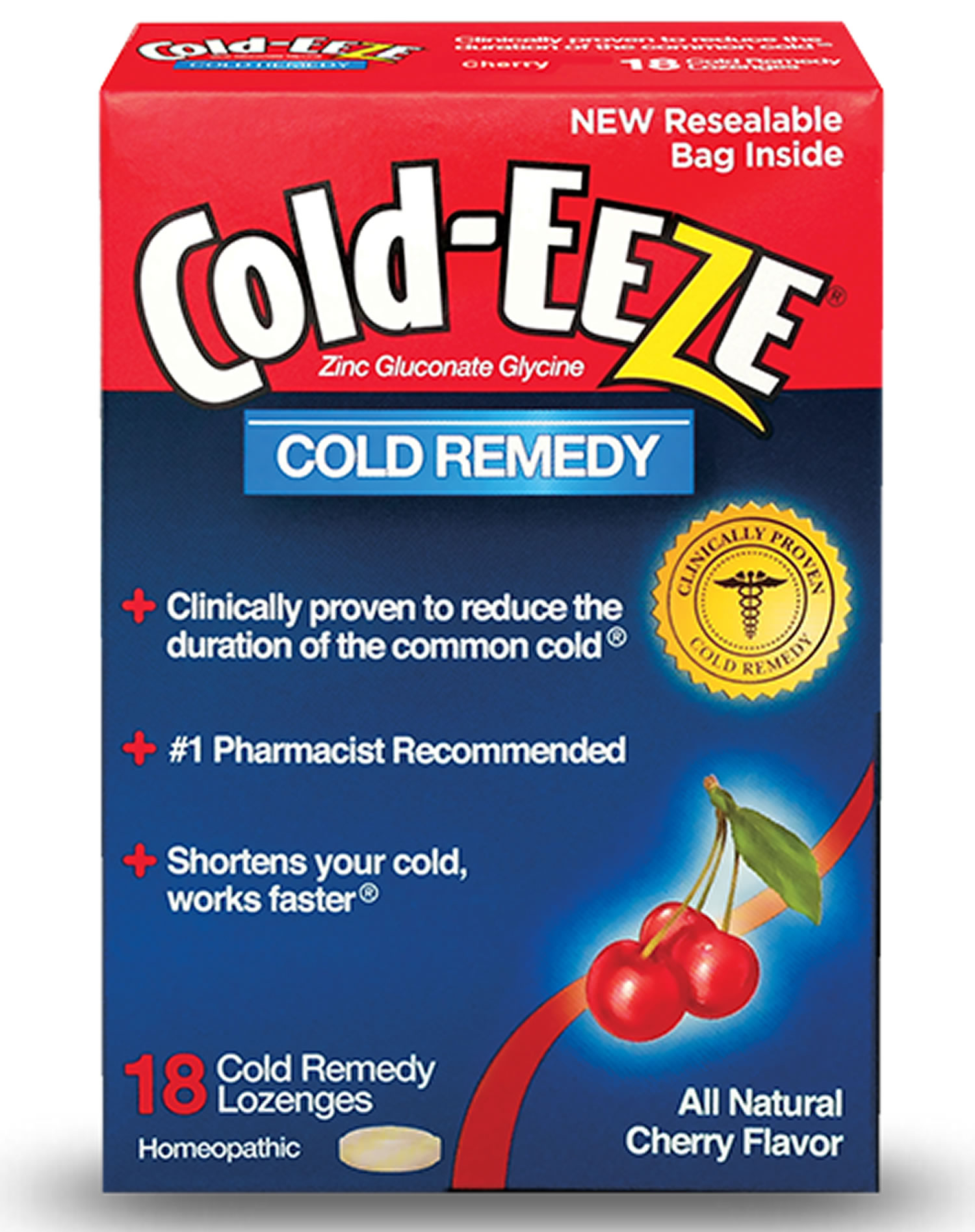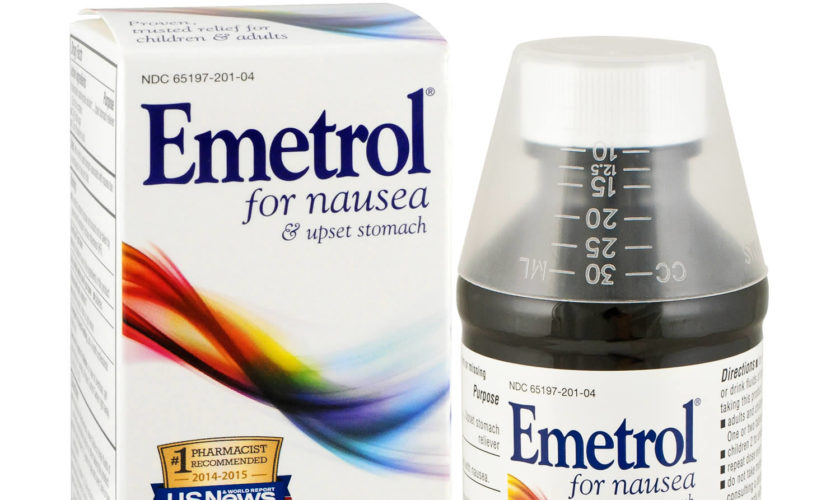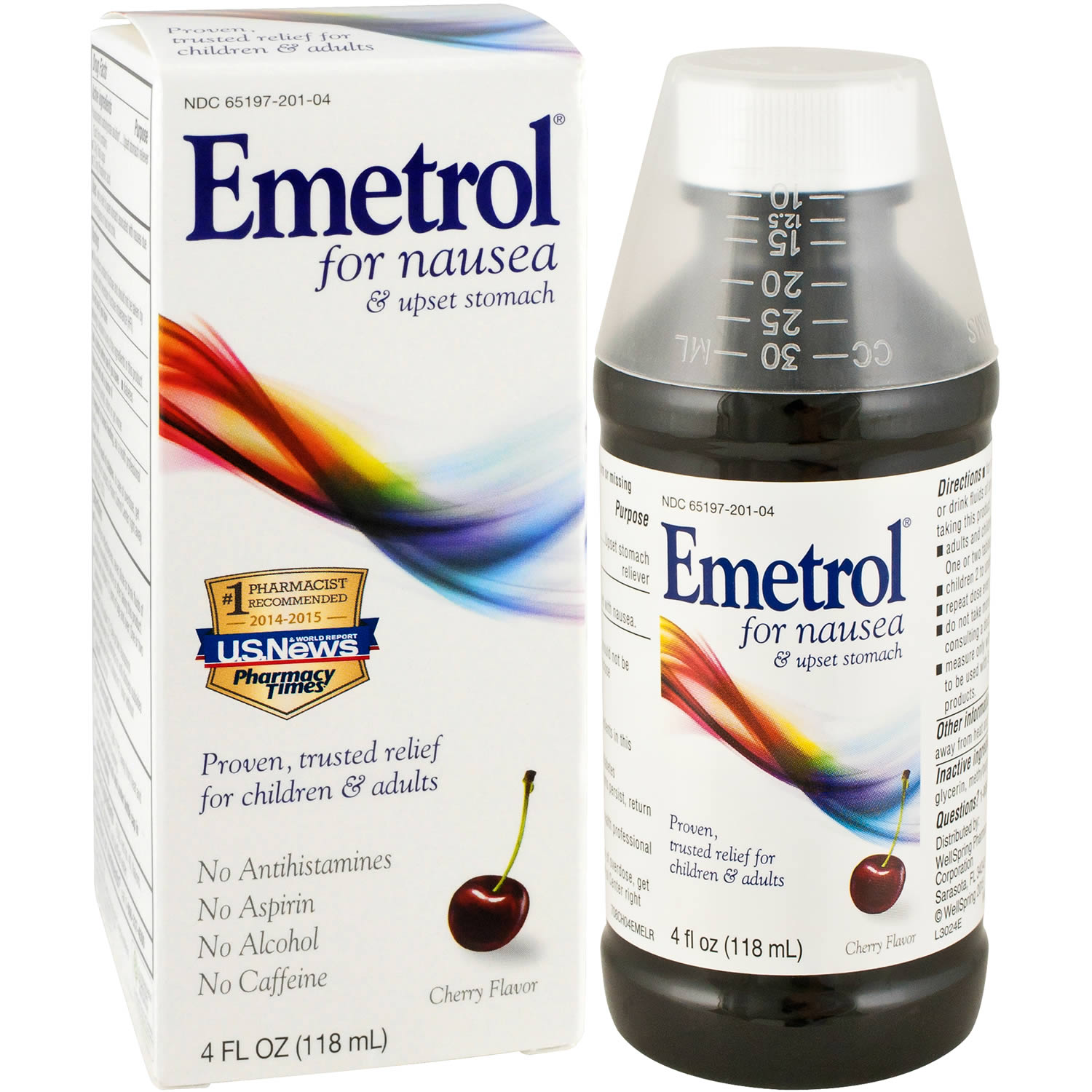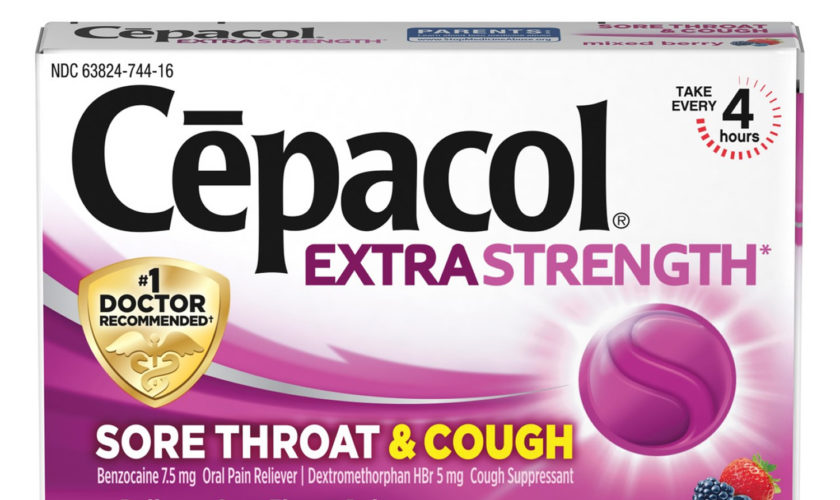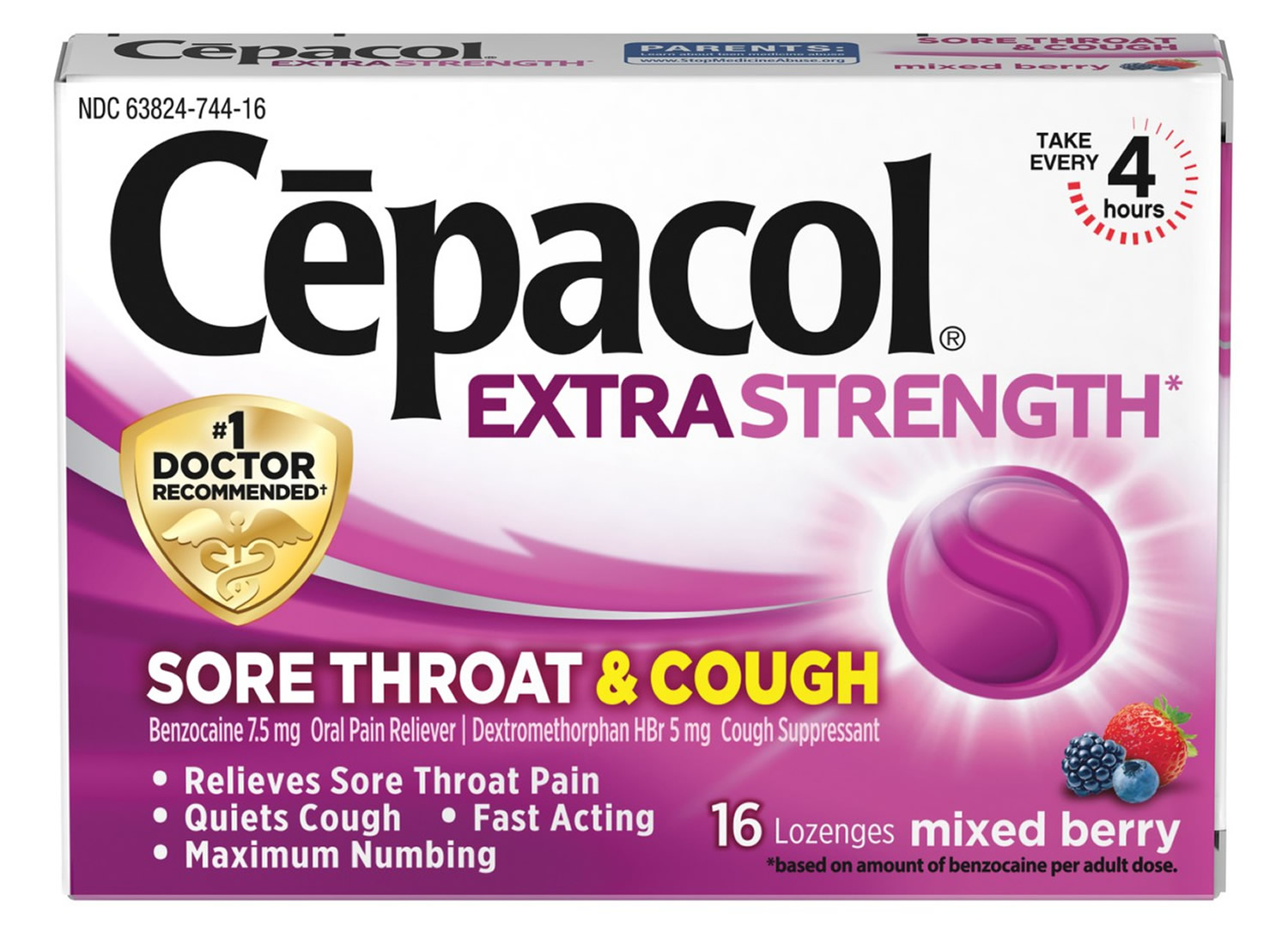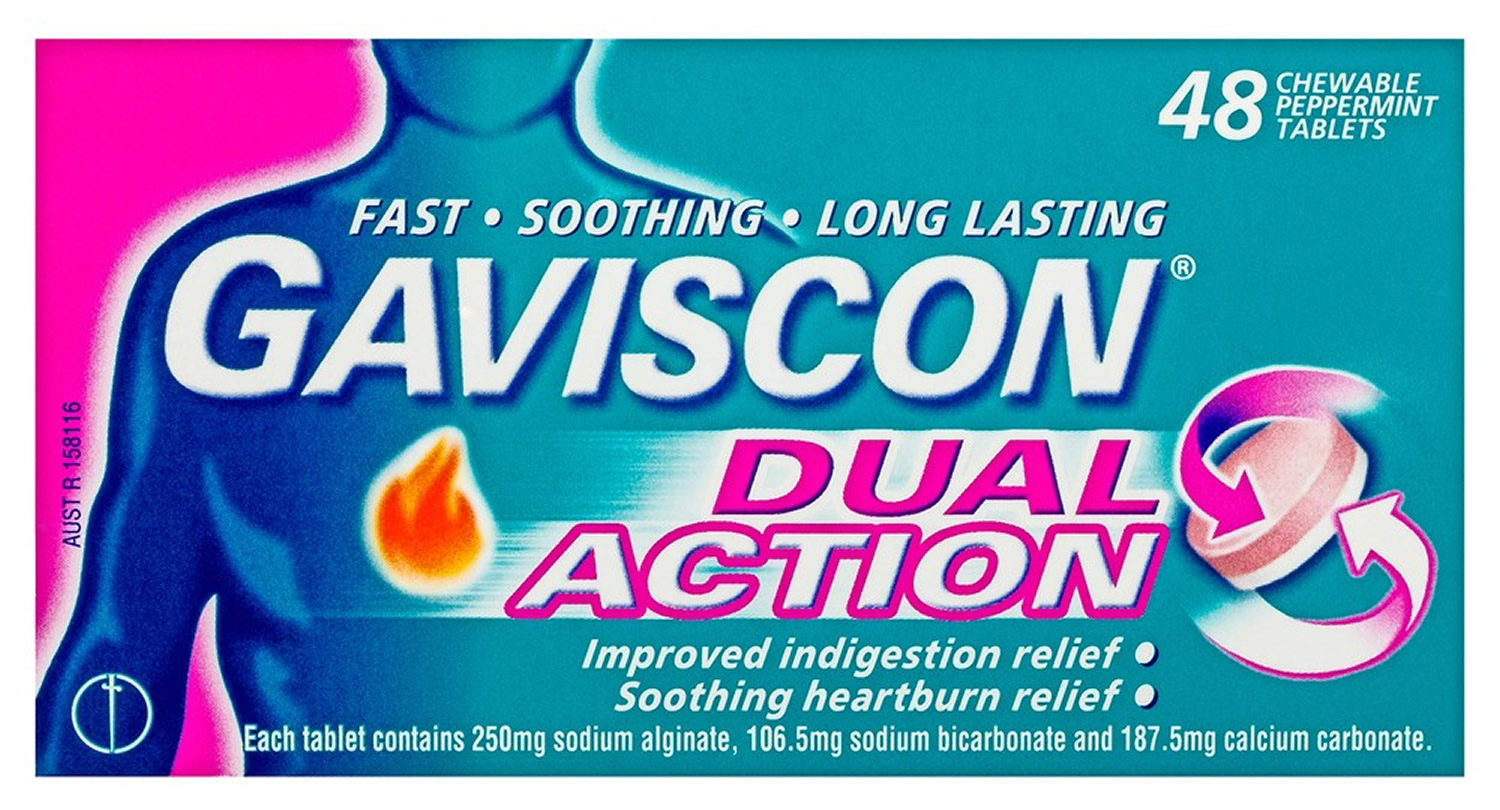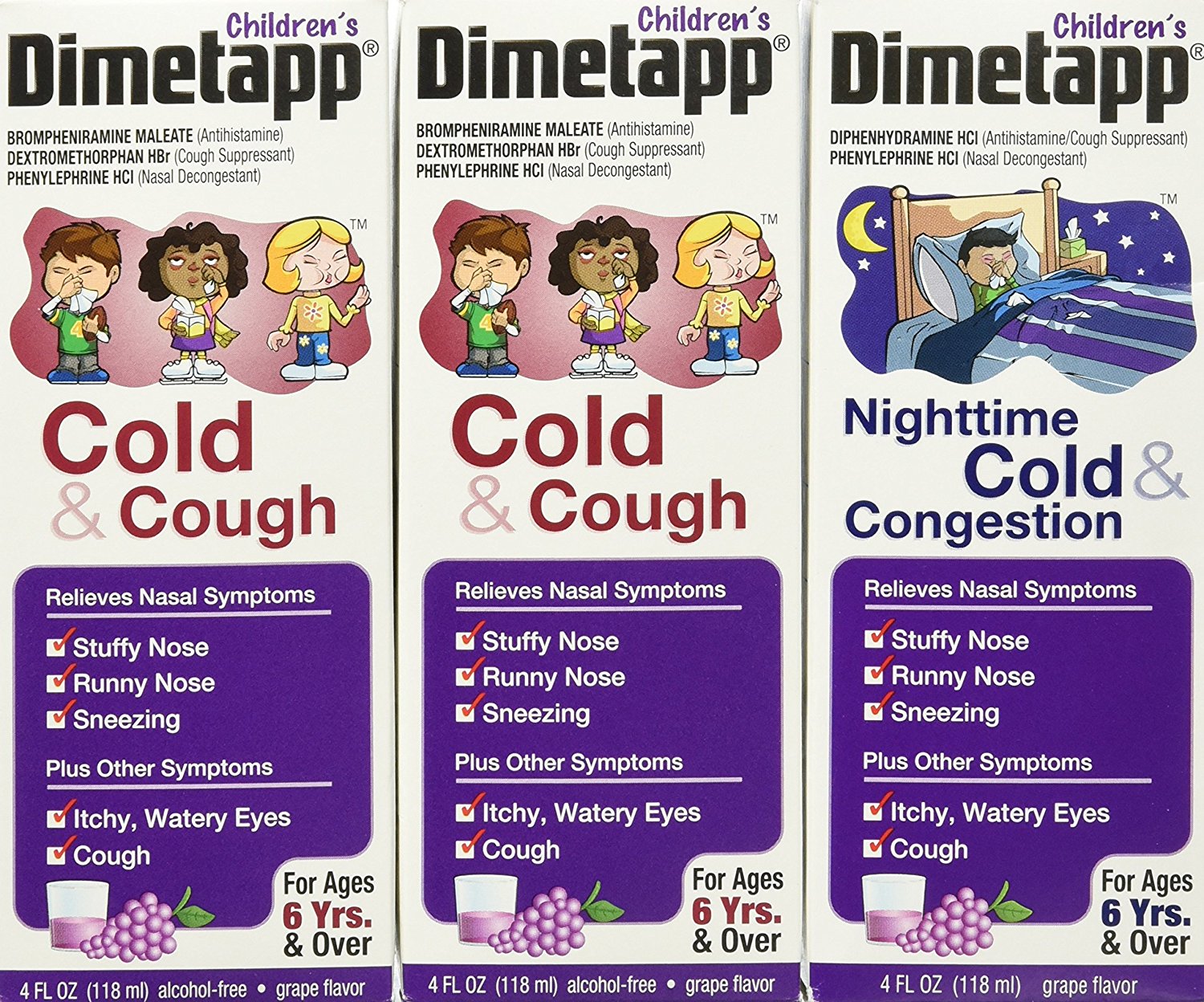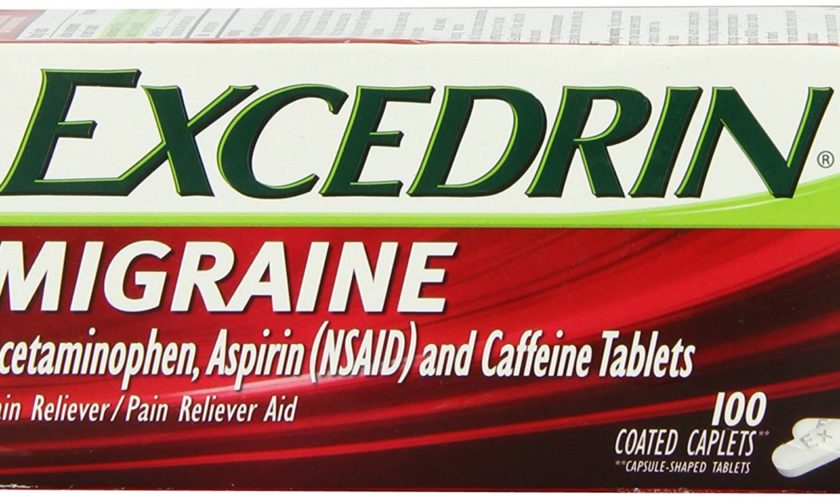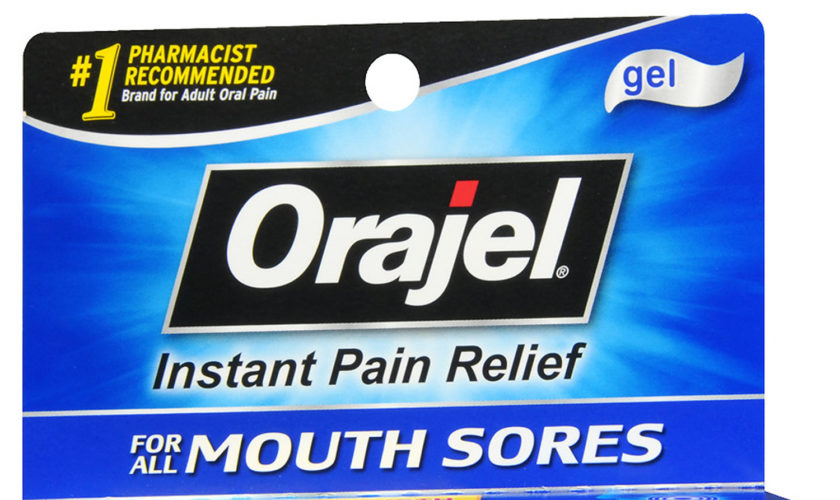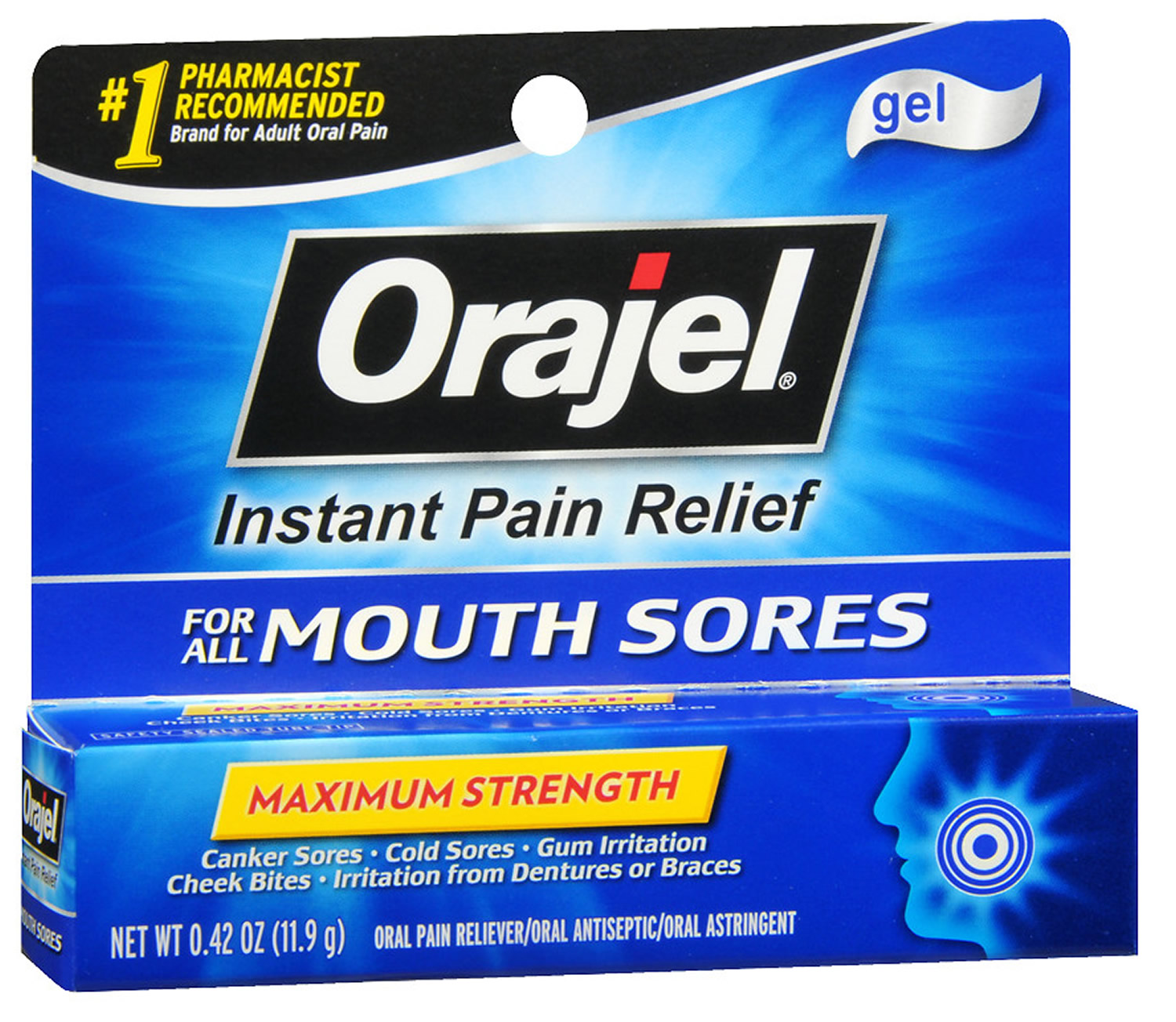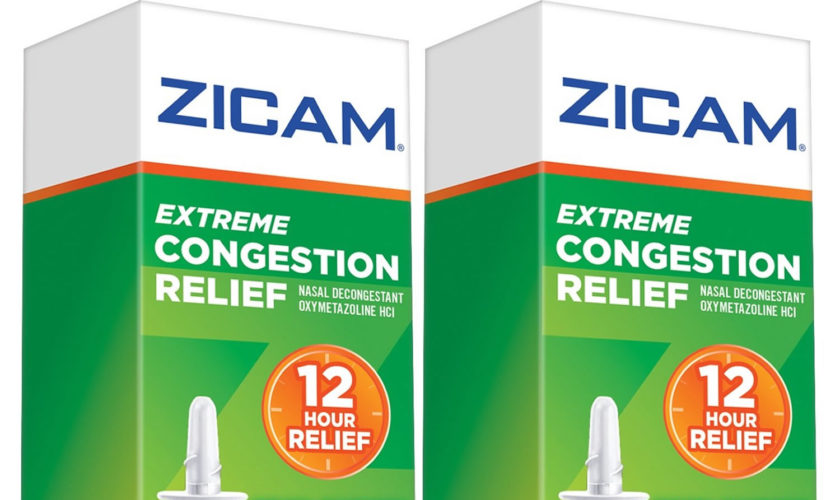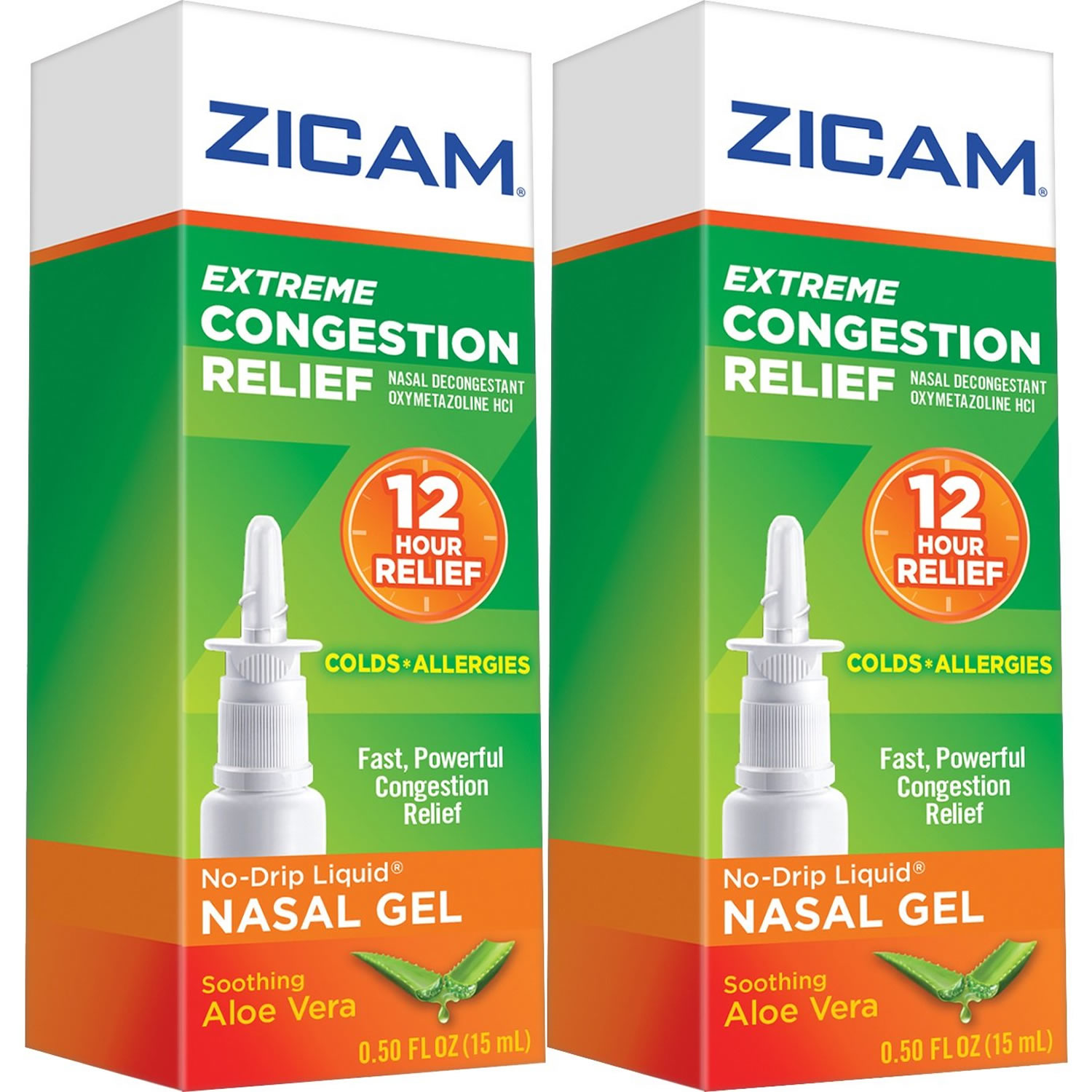What is Advil-Migraine
Advil-Migraine is a medicine that contains a nonsteroidal anti-inflammatory drug (NSAID) – Ibuprofen and is available over-the-counter to relieve pain, treats migraine and reduce fever. Advil-Migraine (ibuprofen) is a nonsteroidal anti-inflammatory drug (NSAID) used to treat mild to moderate pain, fever and pain caused by inflammation. Advil-Migraine (ibuprofen) also helps to relieve symptoms of arthritis (osteoarthritis, rheumatoid arthritis, or juvenile arthritis), such as inflammation, swelling, stiffness, and joint pain. Advil-Migraine does not cure arthritis and will help you only as long as you continue to take it. In addition, Advil-Migraine (ibuprofen) can be used to treat fever, menstrual cramps, and other conditions as determined by your doctor.
You can buy most types of Advil-Migraine (ibuprofen) from pharmacies and supermarkets. Some types are only available on prescription.
Advil-Migraine (ibuprofen) works by inhibiting the enzymes Cyclooxygenase 1 (COX-1) and Cyclooxygenase 2 (COX-2) by reducing hormones prostaglandin that cause inflammation, fever and pain in your body 1. Advil-Migraine (ibuprofen) reduces the ability of your body to make prostaglandins – chemicals that promote pain, inflammation and fever. With fewer prostaglandins in your body, fever eases off, and pain and inflammation is reduced. Cyclooxygenase 1 (COX-1) is constitutively active and is expressed in most tissues, including kidney, lung, stomach, duodenum, jejunum, ileum, colon, and cecum. Cyclooxygenase 1 (COX-1) functions in gastric cytoprotection, vascular homeostasis, platelet aggregation, and maintenance of normal kidney function 2. Cyclooxygenase 2 (COX-2) is an inducible enzyme expressed in the brain, kidney, and possibly in the female reproductive system 2. Cyclooxygenase 2 (COX-2) expression is increased during states of inflammation 3. Cyclooxygenase 2 (COX-2) is a key source of prostacyclin (PGI2) and is cardioprotective in ischemia–reperfusion injury 3. Advil-Migraine (ibuprofen) analgesic activity is primarily (although not exclusively) associated with inhibition of COX-2, while different side effects result from the inhibition of COX-1 and COX-2 4.
Key facts
- Advil-Migraine (ibuprofen) takes 20 to 30 minutes to work if you take it by mouth.
- Advil-Migraine (ibuprofen) works by reducing hormones that cause pain and swelling in the body.
- Taking any form of painkiller frequently can make migraines worse. This is sometimes called “medication overuse headache” or “painkiller headache”.
- Speak to your doctor if you find yourself needing to use painkillers repeatedly or if over-the-counter painkillers aren’t effective. Your doctor may prescribe stronger painkillers or recommend using painkillers along with triptans (see below). If they suspect the frequent use of painkillers may be contributing your headaches, they may recommended that you stop using them.
- Always take Advil-Migraine (ibuprofen) tablets and capsules with food or a drink of milk to reduce the chance of an upset tummy. Don’t take it on an empty stomach.
- If you’re taking tablets, take the lowest dose for the shortest time. Don’t use it for a long time unless you’ve talked about it with your doctor.
- If the treatments above aren’t effectively controlling your migraines, your doctor may refer you to a specialist migraine clinic for further investigation and treatment. A specialist may recommend other treatments such as transcranial magnetic stimulation.
- Transcranial magnetic stimulation involves holding a small electrical device to your head that delivers magnetic pulses through your skin. It’s not clear exactly how transcranial magnetic stimulation works in treating migraines, but studies have shown that using it at the start of a migraine can reduce its severity. It can also be used in combination with the medications mentioned above without interfering with them. However, transcranial magnetic stimulation isn’t a cure for migraines and it doesn’t work for everyone. The evidence for its effectiveness isn’t strong and is limited to people who have migraine with aura. There’s also little evidence about the potential long-term effects of the treatment, although studies into the treatment have so far only reported minor and temporary side effects, including:
- slight dizziness
- drowsiness and tiredness
- a muscle tremor that can make it difficult to stand
- irritability
How long does it take for Advil-Migraine to work?
You should start to feel better 20 to 30 minutes after taking Advil-Migraine (ibuprofen) by mouth.
Advil-Migraine vs Advil
Advil-Migraine contains the same amount of the active ingredient 200 mg ibuprofen as the standard Advil, except Advil-Migraine has the solubilized version of the ibuprofen, which may have a quicker onset.
Can you take Excedrin-Migraine with Advil?
No, because Excedrin-Migraine contains aspirin which belongs to the same group of medicine as Advil (ibuprofen) called non-steroidal anti-inflammatory drugs (NSAIDs). If you take them together, Advil-Migraine (ibuprofen) plus aspirin (Excedrin-Migraine) may increase the chance of you getting side effects like stomach ache.
Taking Advil-Migraine with other painkillers
It’s safe to take Advil-Migraine (ibuprofen) with acetaminophen or codeine.
But don’t take Advil-Migraine (ibuprofen) with similar painkillers like aspirin or naproxen (Aleve) without talking to a doctor.
Advil-Migraine (ibuprofen), aspirin and naproxen belong to the same group of medicines called non-steroidal anti-inflammatory drugs (NSAIDs). If you take them together, Advil-Migraine (ibuprofen) plus aspirin or naproxen may increase the chance of you getting side effects like stomach ache.
Alternatives to Advil-Migraine
For treating fever, an alternative to Advil-Migraine (ibuprofen) is acetaminophen (Tylenol).
For pain or inflammation-related swelling, ask your doctor or pharmacist for an alternative if Advil-Migraine (ibuprofen) is not suitable for you. Your health professional may suggest you try:
- acetaminophen (paracetamol)
- another medicine from the NSAID family
- a medicine that combines codeine with acetaminophen in the same tablet.
If your pain is severe, your doctor may prescribe you a stronger pain reliever.
Treating migraine without medicine
The following non-medicine treatments may help you to prevent frequent or troublesome migraines — you can use them either instead of, or as well as, medicine treatments:
- physical therapies (eg, physiotherapy or chiropractic treatment), especially if neck problems are thought to be contributing to your migraines — it’s essential to seek out a therapist with specialist training in this area, however, as there have been very rare reports of stroke after spinal manipulation of the neck
- physical exercise
- relaxation training (eg, yoga, meditation), which can help manage underlying problems with stress
- cognitive behavioral therapy (CBT), a psychological therapy that teaches you to identify and challenge stress generating thoughts
- acupuncture. If medication is unsuitable, or it doesn’t help to prevent migraines, you may want to consider acupuncture.
Medicines for an acute migraine attack
There’s currently no cure for migraines, although a number of treatments are available to help ease the symptoms.
Most people find that sleeping or lying in a darkened room is the best thing to do when having a migraine attack.
Others find that eating something helps, or they start to feel better once they’ve been sick.
It may take time to work out the best treatment for you. You may need to try different types or combinations of medicines before you find the most effective ones.
Doctors recommend a stepped approach to treatment for acute migraine attack; that is, trying the simplest remedy first. If this fails to manage your pain — as a general rule on 3 consecutive occasions — then you should try the next treatment.
- Step 1. Simple pain relief medicine alone
Most simple pain relief medicines are available to buy over-the-counter in pharmacies and supermarkets.
Many people who have migraines find that over-the-counter painkillers, such as acetaminophen (Tylenol), aspirin and ibuprofen (Advil, Advil-Migraine or Motrin IB), can help to reduce their symptoms.
They tend to be most effective if taken at the first signs of a migraine attack, as this gives them time to absorb into your bloodstream and ease your symptoms.
It’s not advisable to wait until the headache worsens before taking painkillers as it’s often too late for the medication to work. Soluble painkillers (tablets you dissolve in a glass of water) like Advil-Migraine are a good alternative because they’re absorbed quickly by your body.
If you can’t swallow painkillers because of nausea or vomiting, suppositories may be a better option. These are capsules that are inserted into the anus (back passage).
Take pain relief medicine at the first sign of migraine symptoms. As a migraine progresses, your stomach emptying can slow and this can affect the absorption of pain relievers into your bloodstream, making them less effective. This is especially important if you experience nausea and vomiting with migraine.
- Step 2. Simple pain reliever and medicine for nausea and vomiting
If nausea is a problem, or if a pain reliever alone does not relieve your migraine pain, you can take the pain reliever with medicine to treat nausea and vomiting.
Medication for nausea is usually combined with other medications. Frequently prescribed medications are chlorpromazine, metoclopramide (Reglan) or prochlorperazine (Compro).
- Step 3. Anti-migraine medicine: the triptans
If you find you can’t manage your migraines using over-the-counter medicines, your doctor may prescribe something stronger.
Triptans work differently to pain relievers. Triptan medicines are a specific painkiller for migraine headaches. There are a number of different triptans available in the US and you will need to get a prescription from your doctor.
Triptans are thought to work by reversing the changes in the brain that may cause migraine headaches.
They cause the blood vessels around the brain to contract (narrow). This reverses the dilating (widening) of blood vessels that’s believed to be part of the migraine process.
Triptans are available as tablets, injections and nasal sprays.
Common side effects of triptans include:
- warm-sensations
- tightness
- tingling
- flushing
- feelings of heaviness in the face, limbs or chest
Some people also experience nausea, dry mouth and drowsiness. These side effects are usually mild and improve on their own.
As with other painkillers, taking too many triptans can lead to medication overuse headache.
Your doctor will usually recommend having a follow-up appointment once you’ve finished your first course of treatment with triptans. This is so you can discuss their effectiveness and whether you had any side effects.
If the medication was helpful, treatment will usually be continued. If they weren’t effective or caused unpleasant side effects, your doctor may try prescribing a different type of triptan since responses can be highly variable.
- Step 4. Preventive therapy
If you are experiencing two or more severe migraine attacks a month, you could be a candidate for preventive therapy. Preventive therapy is used in addition to treatments for acute attack, not in place of it.
The aim of migraine preventive therapy is to reduce the number of attacks to a manageable level, either because:
- the medicines used to treat attacks don’t control your symptoms adequately, or
- migraine attacks, even though well controlled, are happening far too often, placing you at risk of developing medication overuse headache.
Note that it may take some months for the full effect of preventive therapy to be seen.
In general, medicines used as preventive therapy are more commonly prescribed for the treatment of other conditions (eg, high blood pressure or depression) but have unrelated anti-migraine effects — for example:
- beta-blockers — Propranolol (Deralin), atenolol (Noten, Anselol), metoprolol (Betaloc, Lopressor)
- amitriptyline (Endep).
Other medicines occasionally used to prevent migraines include antiepileptic medicines (especially sodium valproate [Epilim, Valpro] and topiramate [Epiramax, Tamate]), methysergide (Deseril) and botulinum toxin (botox).
Treatment can be complicated and is best managed by a specialist (neurologist).
Is Advil-Migraine better than acetaminophen or aspirin?
Advil-Migraine (ibuprofen), acetaminophen (paracetamol) and aspirin are all effective painkillers.
Advil-Migraine (ibuprofen) is good for period pain and migraines. It can also be used for back pain, strains and sprains, as well as pain from arthritis.
Acetaminophen (Tylenol) is typically used for mild or moderate pain. Acetaminophen (Tylenol, others), also may help relieve mild migraines in some people. It may be better than Advil-Migraine (ibuprofen) for headaches, toothache, sprains, stomach ache, and nerve pain like sciatica.
Aspirin works in a similar way to Advil-Migraine (ibuprofen). Like Advil-Migraine (ibuprofen), it’s good for period pain and migraines. (If you have heavy periods, it can make them heavier.)
How long will I take Advil-Migraine tablets for?
If you’re taking Advil-Migraine (ibuprofen) for a short-lived pain like migraine, you may only need to take it for a day or two.
If you need to take Advil-Migraine (ibuprofen) for more than 6 months, your doctor may prescribe a medicine to protect your stomach from any side effects.
Can I take Advil-Migraine for a long time?
It’s safe to take Advil-Migraine (ibuprofen) regularly for many years if you need to as long as you don’t take more than the recommended dosage.
If you need to take Advil-Migraine (ibuprofen) by mouth for a long time and you’re at risk of getting a stomach ulcer, your doctor may prescribe a medicine to help protect your stomach.
Does Advil-Migraine cause stomach ulcers?
Advil-Migraine (ibuprofen) can cause ulcers in your stomach or gut, especially if you take it by mouth for a long time or in big doses.
If you need to take Advil-Migraine (ibuprofen) and you’re at risk of getting a stomach ulcer, your doctor may prescribe a medicine to help protect your stomach.
Can I drink alcohol with Advil-Migraine?
It’s usually safe to drink alcohol while taking Advil-Migraine (ibuprofen). But if you’re taking Advil-Migraine (ibuprofen) by mouth, drinking too much alcohol may irritate your stomach and increases your risk of getting stomach ulcers.
Is there any food or drink I need to avoid?
You can eat and drink normally while taking any type of Advil-Migraine (ibuprofen).
It’s best to take Advil-Migraine (ibuprofen) tablets, capsules or syrup with, or just after, a meal so it doesn’t upset your stomach. Don’t take it on an empty stomach.
What if Advil-Migraine doesn’t work?
If Advil-Migraine (ibuprofen) doesn’t work, there are other everyday painkillers you can try, such as:
- acetaminophen (paracetamol)
- aspirin
- co-codamol (acetaminophen combined with low-dose codeine). Opioid medications containing narcotics, particularly codeine, are sometimes used to treat migraine pain for people who can’t take triptans or ergots. Narcotics are habit-forming and are usually used only if no other treatments provide relief.
If pharmacy painkillers don’t work, your doctor may be able to prescribe a stronger painkiller or recommend another treatment, such as triptans or ergots.
Ergotamine and caffeine combination drugs (Migergot, Cafergot) are less effective than triptans. Ergots seem most effective in those whose pain lasts for more than 48 hours. Ergots are most effective when taken soon after migraine symptoms start.
Ergotamine may worsen nausea and vomiting related to your migraines, and it may also lead to medication-overuse headaches.
Dihydroergotamine (D.H.E. 45, Migranal) is an ergot derivative that is more effective and has fewer side effects than ergotamine. It’s also less likely to lead to medication-overuse headaches. It’s available as a nasal spray and in injection form.
Will Advil-Migraine affect my fertility?
Taking Advil-Migraine (ibuprofen) by mouth, in large doses, or for a long time can affect ovulation in women, possibly making it more difficult for you to get pregnant. This is usually reversible when you stop taking Advil-Migraine (ibuprofen).
Don’t take Advil-Migraine (ibuprofen) tablets, capsules or syrup if you’re trying for a baby. Acetaminophen (Paracetamol) is a better option.
Will Advil-Migraine affect my contraception?
Advil-Migraine (ibuprofen) – by mouth or on your skin – doesn’t affect any contraceptives, including the contraceptive pill and the morning after pill.
Advil-Migraine vs Excedrin Migraine
Advil-Migraine contains 200 mg ibuprofen a nonsteroidal anti-inflammatory drug (NSAID).
Excedrin-Migraine is a medicine that contains active ingredients in a combination of Acetaminophen (paracetamol), Aspirin, and Caffeine. Acetaminophen is a pain reliever and a fever reducer. Aspirin is acetylsalicylic acid in a group of drugs called salicylates, classified as a non-steroidal anti-inflammatory drug (NSAID). Aspirin works by reducing substances in your body that cause pain, fever, and inflammation. Caffeine is a central nervous system stimulant. Caffeine relaxes muscle contractions in blood vessels to improve blood flow.
Excedrin Migraine may also ease moderate migraine pain. But they aren’t effective alone for severe migraines. If taken too often or for long periods of time, these medications can lead to ulcers, gastrointestinal bleeding and medication-overuse headaches.
Pregnancy and breastfeeding
Advil-Migraine (ibuprofen) isn’t normally recommended in pregnancy.
It may cause birth defects affecting the baby’s heart or blood vessels. There may also be a link between taking Advil-Migraine (ibuprofen) in early pregnancy and miscarriage.
Acetaminophen (paracetamol) is the best painkiller to take during pregnancy.
If pregnant or breast-feeding, ask a health professional before use. It is especially important not to use ibuprofen during the last 3 months of pregnancy unless definitely directed to do so by a doctor because it may cause problems in the unborn child or complications during delivery.
This medicine may be harmful to an unborn baby. Taking ibuprofen during the last 3 months of pregnancy may result in birth defects and prolonged labor and delivery. Do not use this medicine without a doctor’s advice if you are pregnant.
Use in late pregnancy should be avoided. May constrict ductus arteriosus in utero or inhibit or prolong labor as result of inhibition of prostaglandin synthetase 5.
For safety, tell your pharmacist or doctor if you’re trying to get pregnant, are already pregnant or if you’re breastfeeding.
To assess the fetal effects of exposure to ibuprofen overdose in pregnancy 6. Ibuprofen, a non-steroidal anti-inflammatory drug (NSAID) is a frequently used analgesic that is readily available over the counter. Concerns have been raised that therapeutic use of NSAIDs is associated with an increased risk of miscarriage and renal dysfunction. Although most acute overdoses are of low toxicity, few data exist on the potential fetotoxicity of ibuprofen overdose during pregnancy. Using standardized procedures, National Technical Information Service (NTIS) has provided fetal risk assessment and collected outcome data on a prospective case series of 100 women who took ibuprofen in overdose during pregnancy. Results are the majority of liveborn infants (66/73=90.4%) had no congenital anomalies. No pattern of anomalies was observed. Multidrug overdoses in which ibuprofen was the major constituent were taken by 68%, mainly compound analgesics and cold remedies with 28% taking paracetamol. The majority (86%) of overdoses occurred in the first trimester with only 9 (9%) reports of any significant maternal toxicity including 1 mother who was unconscious. Conclusion: The incidence of miscarriages (9% versus 10-20%) and terminations (18% versus 23%) is within the expected range 6. However, the incidence of congenital anomalies is higher (7/73=9.6% versus 2-3% expected), but two exposures were second trimester, and the numbers are small. Although no pattern of malformations was seen, three were cardiac anomalies 6. As congenital heart anomalies are common 0.5-1% it is not possible to establish a causal relationship with the drugs taken in overdose. No cases of renal dysfunction were seen. In the majority of women who receive appropriate treatment at the time of the overdose the outcome of pregnancy is a normal baby 6.
Advil-Migraine (ibuprofen) and breastfeeding
Advil-Migraine (ibuprofen) is safe to take by mouth if you are breastfeeding.
Two early studies attempted measurement of ibuprofen in milk 7, 8. In one, the patient’s dose was 400 mg twice daily, while in the second study of 12 patients, the dose was 400 mg every 6 hours. Ibuprofen was undetectable in breastmilk in both studies (<0.5 and 1 mg/L, respectively) 7, 8.
A later study using a more sensitive assay found ibuprofen in the breastmilk of one woman who took 6 doses of 400 mg orally over a 42.5 hours. A milk ibuprofen level of 13 mcg/L was detected 30 minutes after the first dose. The highest level measured was 180 mcg/L about 4 hours after the third dose, 20.5 hours after the first dose. The authors estimated that the infant would receive about 17 mcg/kg daily (100 mcg daily) with the maternal dose of approximately 1.2 grams daily. This dose represents 0.0008% of the maternal weight-adjusted dosage 9 and 0.06% of the commonly accepted infant dose of 30 mg/kg daily (10 mg/kg every 8 hours).
Single milk samples were taken from 13 women between 1.5 and 8 hours after the third dose of ibuprofen in a daily dosage regimen averaging 1012 mg daily (range 400 to 1200 mg daily). Of the 13 milk samples analyzed, the mean milk concentration was 361 mcg/L (range 164 to 590 mcg/L). The mean weight-adjusted percentage of the maternal dosage (relative infant dosage) was estimated to be <0.38%; however, the relative infant dosage varied with the time postpartum and the milk protein content. The relative infant dosage was highest in the colostral phase when the milk protein content was the highest (relative infant dosage 0.6%). The estimated mean dosage for a fully breastfed infants was 68 mcg/kg daily or 0.2% of a pediatric dosage 10.
What is Advil-Migraine (ibuprofen) used for?
Advil-Migraine (ibuprofen) can be used for the short-term relief of fever, mild to moderate pain and inflammation (redness, swelling and soreness).
Advil-Migraine (ibuprofen) might ease some of the symptoms of:
- headaches e.g. migraines or tension headache
- sinus pain
- toothache and pain after dental procedures
- backache, muscular aches and pains
- period pain/primary dysmenorrhea
- sore throat
- joint or tendon sprains and strains such as tennis elbow
- arthritis
- fever (pyrexia) or high temperature.
- Advil-Migraine (ibuprofen) is also indicated for the relief of acute and/or chronic pain states in which there is an inflammatory component. For example, Rheumatoid arthritis, Juvenile rheumatoid arthritis and Osteoarthritis
Please note that Advil-Migraine (ibuprofen) provides only temporary relief – it won’t cure your condition.
People who take nonsteroidal anti-inflammatory drugs (NSAIDs) (other than aspirin) such as ibuprofen may have a higher risk of having a heart attack or a stroke than people who do not take these medications. These events may happen without warning and may cause death. This risk may be higher for people who take NSAIDs for a long time. Do not take an NSAID such as ibuprofen if you have recently had a heart attack, unless directed to do so by your doctor. Tell your doctor if you or anyone in your family has or has ever had heart disease, a heart attack, or a stroke; if you smoke; and if you have or have ever had high cholesterol, high blood pressure, or diabetes. Get emergency medical help right away if you experience any of the following symptoms: chest pain, shortness of breath, weakness in one part or side of the body, or slurred speech.
If you will be undergoing a coronary artery bypass graft (CABG; a type of heart surgery), you should not take ibuprofen right before or right after the surgery.
NSAIDs such as ibuprofen may cause ulcers, bleeding, or holes in the stomach or intestine. These problems may develop at any time during treatment, may happen without warning symptoms, and may cause death. The risk may be higher for people who take NSAIDs for a long time, are older in age, have poor health, or who drink three or more alcoholic drinks per day while taking ibuprofen. Tell your doctor if you take any of the following medications: anticoagulants (‘blood thinners’) such as warfarin (Coumadin, Jantoven); aspirin; other NSAIDs such as ketoprofen and naproxen (Aleve, Naprosyn); oral steroids such as dexamethasone, methylprednisolone (Medrol), and prednisone (Rayos); selective serotonin reuptake inhibitors (SSRIs) such as citalopram (Celexa), fluoxetine (Prozac, Sarafem, Selfemra, in Symbyax), fluvoxamine (Luvox), paroxetine (Brisdelle, Paxil, Pexeva), and sertraline (Zoloft); or serotonin norepinephrine reuptake inhibitors (SNRIs) such as desvenlafaxine (Khedezla, Pristiq), duloxetine (Cymbalta), and venlafaxine (Effexor XR). Also tell your doctor if you have or have ever had ulcers, bleeding in your stomach or intestines, or other bleeding disorders. If you experience any of the following symptoms, stop taking ibuprofen and call your doctor: stomach pain, heartburn, vomit that is bloody or looks like coffee grounds, blood in the stool, or black and tarry stools.
Keep all appointments with your doctor and the laboratory. Your doctor will monitor your symptoms carefully and will probably order certain tests to check your body’s response to ibuprofen. Be sure to tell your doctor how you are feeling so that your doctor can prescribe the right amount of medication to treat your condition with the lowest risk of serious side effects.
Your doctor or pharmacist will give you the manufacturer’s patient information sheet (Medication Guide) when you begin treatment with prescription ibuprofen and each time you refill your prescription. Read the information carefully and ask your doctor or pharmacist if you have any questions. You can also visit the Food and Drug Administration (FDA) website (https://www.fda.gov/Drugs/DrugSafety/ucm085729.htm) or the manufacturer’s website to obtain the Medication Guide.
Advil-Migraine vs Ibuprofen
Advil-Migraine is a medicine that contains a nonsteroidal anti-inflammatory drug (NSAID) – Ibuprofen.
 Who can and can’t take Advil-Migraine
Who can and can’t take Advil-Migraine
Some brands of Advil-Migraine (ibuprofen) tablets, capsules and syrup contain aspartame, colors (E numbers), gelatin, glucose, lactose, sodium, sorbitol, soya or sucrose, so they may be unsuitable for some people.
Don’t take Advil-Migraine (ibuprofen) by mouth if you:
- have had an allergic reaction to Advil-Migraine (ibuprofen) or any other medicines in the past
- have previously had a reaction, such as asthma, a raised, itchy red rash (urticaria), swelling underneath your skin (angioedema) or swelling of the inside of your nose (rhinitis)
- have taken aspirin or any other nonsteroidal anti-inflammatory drug (NSAID)
- have asthma or another allergic illness
- are trying to get pregnant, are already pregnant or if you’re breastfeeding
To make sure Advil-Migraine (ibuprofen) (by mouth) is safe for you, tell your doctor or pharmacist if you have:
- had bleeding in your stomach, a stomach ulcer, or a perforation (a hole) in your stomach
- a health problem that means you have an increased chance of bleeding
- liver problems, such as liver fibrosis, cirrhosis or liver failure
- heart disease or severe heart failure
- kidney failure
- Crohn’s disease or ulcerative colitis
- chickenpox or shingles – taking Advil-Migraine (ibuprofen) can increase the chance of certain infections and skin reactions
Cautions with other medicines
Advil-Migraine (ibuprofen) doesn’t mix well with some medicines.
Advil-Migraine (ibuprofen) applied to the skin is less likely to interfere with other medicines than if it’s taken by mouth.
For safety, tell your doctor if you’re taking these medicines before you start taking Advil-Migraine (ibuprofen) by mouth or on your skin:
- blood-thinning medicines such as warfarin
- anti-inflammatory painkillers such as aspirin, diclofenac, mefenamic acid and naproxen
- medicines for high blood pressure
- steroid medicines such as betamethasone, dexamethasone, hydrocortisone or prednisolone
- antibiotics such as ciprofloxacin, levofloxacin, moxifloxacin, nalidixic acid, norfloxacin or ofloxacin
- antidepressants such as citalopram, fluoxetine, fluvoxamine, venlafaxine, paroxetine or sertraline
- diabetes medicines such as gliclazide, glimepiride, glipizide and tolbutamide
Other uses for Advil-Migraine
Advil-Migraine (ibuprofen) is also sometimes used to treat ankylosing spondylitis (arthritis that mainly affects the spine), gouty arthritis (joint pain caused by a build-up of certain substances in the joints), and psoriatic arthritis (arthritis that occurs with a long-lasting skin disease that causes scaling and swelling). Talk to your doctor about the risks of using this drug for your condition.
This medication is sometimes prescribed for other uses; ask your doctor or pharmacist for more information.
Prescription Advil-Migraine (ibuprofen) comes as a tablet to take by mouth. It is usually taken three or four times a day for arthritis or every 4 to 6 hours as needed for pain. Nonprescription Advil-Migraine (ibuprofen) comes as a tablet, chewable tablet, suspension (liquid), and drops (concentrated liquid). Adults and children older than 12 years of age may usually take nonprescription Advil-Migraine (ibuprofen) every 4 to 6 hours as needed for pain or fever. Children and infants may usually be given nonprescription Advil-Migraine (ibuprofen) every 6 to 8 hours as needed for pain or fever, but should not be given more than 4 doses in 24 hours. Advil-Migraine (ibuprofen) may be taken with food or milk to prevent stomach upset. If you are taking Advil-Migraine (ibuprofen) on a regular basis, you should take it at the same time(s) every day. Follow the directions on the package or prescription label carefully, and ask your doctor or pharmacist to explain any part you do not understand. Take Advil-Migraine (ibuprofen) exactly as directed. Do not take more or less of it or take it more often than directed by the package label or prescribed by your doctor.
Advil-Migraine (ibuprofen) comes alone and in combination with other medications. Some of these combination products are available by prescription only, and some of these combination products are available without a prescription and are used to treat cough and cold symptoms and other conditions. If your doctor has prescribed a medication that contains Advil-Migraine (ibuprofen), you should be careful not to take any nonprescription medications that also contain Advil-Migraine (ibuprofen).
If you are selecting a product to treat cough or cold symptoms, ask your doctor or pharmacist for advice on which product is best for you. Check nonprescription product labels carefully before using two or more products at the same time. These products may contain the same active ingredient(s) and taking them together could cause you to receive an overdose. This is especially important if you will be giving cough and cold medications to a child.
Nonprescription cough and cold combination products, including products that contain Advil-Migraine (ibuprofen), can cause serious side effects or death in young children. Do not give these products to children younger than 4 years of age. If you give these products to children 4 to 11 years of age, use caution and follow the package directions carefully.
If you are giving Advil-Migraine (ibuprofen) or a combination product that contains Advil-Migraine (ibuprofen) to a child, read the package label carefully to be sure that it is the right product for a child of that age. Do not give Advil-Migraine (ibuprofen) products that are made for adults to children.
Before you give an Advil-Migraine (ibuprofen) product to a child, check the package label to find out how much medication the child should receive. Give the dose that matches the child’s age on the chart. Ask the child’s doctor if you don’t know how much medication to give the child.
Shake the suspension and drops well before each use to mix the medication evenly. Use the measuring cup provided to measure each dose of the suspension, and use the dosing device provided to measure each dose of the drops.
The chewable tablets may cause a burning feeling in the mouth or throat. Take the chewable tablets with food or water.
Stop taking nonprescription Advil-Migraine (ibuprofen) and call your doctor if your symptoms get worse, you develop new or unexpected symptoms, the part of your body that was painful becomes red or swollen, your pain lasts for more than 10 days, or your fever lasts more than 3 days. Stop giving nonprescription Advil-Migraine (ibuprofen) to your child and call your child’s doctor if your child does not start to feel better during the first 24 hours of treatment. Also stop giving nonprescription Advil-Migraine (ibuprofen) to your child and call your child’s doctor if your child develops new symptoms, including redness or swelling on the painful part of his body, or if your child’s pain or fever get worse or lasts longer than 3 days.
Do not give nonprescription Advil-Migraine (ibuprofen) to a child who has a sore throat that is severe or does not go away, or that comes along with fever, headache, nausea, or vomiting. Call the child’s doctor right away, because these symptoms may be signs of a more serious condition.
Before taking Advil-Migraine
- tell your doctor and pharmacist if you are allergic to Advil-Migraine (ibuprofen), aspirin or other NSAIDs such as ketoprofen and naproxen (Aleve, Naprosyn), any other medications, or any of the inactive ingredients in the type of Advil-Migraine (ibuprofen) you plan to take. Ask your pharmacist or check the label on the package for a list of the inactive ingredients.
- tell your doctor and pharmacist what prescription and nonprescription medications, vitamins, nutritional supplements, and herbal products you are taking or plan to take. Be sure to mention the medications listed in the IMPORTANT WARNING section and any of the following: angiotensin-converting enzyme (ACE) inhibitors such as benazepril (Lotensin, in Lotrel), captopril, enalapril (Vasotec, in Vaseretic), fosinopril, lisinopril (in Zestoretic), moexipril (Univasc), perindopril (Aceon, in Prestalia), quinapril (Accupril, in Quinaretic), ramipril (Altace), and trandolapril (Mavik, in Tarka); angiotensin receptor blockers such as candesartan (Atacand, in Atacand HCT), eprosartan (Teveten), irbesartan (Avapro, in Avalide), losartan (Cozaar, in Hyzaar), olmesartan (Benicar, in Azor, in Benicar HCT, in Tribenzor), telmisartan (Micardis, in Micardis HCT, in Twynsta), and valsartan (in Exforge HCT); beta blockers such as atenolol (Tenormin, in Tenoretic), labetalol (Trandate), metoprolol (Lopressor, Toprol XL, in Dutoprol), nadolol (Corgard, in Corzide), and propranolol (Hemangeol, Inderal, Innopran); diuretics (‘water pills’); lithium (Lithobid); and methotrexate (Otrexup, Rasuvo, Trexall). Your doctor may need to change the doses of your medications or monitor you more carefully for side effects.
- do not take nonprescription Advil-Migraine (ibuprofen) with any other medication for pain unless your doctor tells you that you should.
- tell your doctor if you have or have ever had any of the conditions mentioned in the IMPORTANT WARNING section or asthma, especially if you also have frequent stuffed or runny nose or nasal polyps (swelling of the inside of the nose); heart failure; swelling of the hands, arms, feet, ankles, or lower legs; lupus (a condition in which the body attacks many of its own tissues and organs, often including the skin, joints, blood, and kidneys); or liver or kidney disease. If you are giving Advil-Migraine (ibuprofen) to a child, tell the child’s doctor if the child has not been drinking fluids or has lost a large amount of fluid from repeated vomiting or diarrhea.
- tell your doctor if you are pregnant, especially if you are in the last few months of your pregnancy; you plan to become pregnant; or you are breast-feeding. If you become pregnant while taking Advil-Migraine (ibuprofen), call your doctor.
- if you are having surgery, including dental surgery, tell the doctor or dentist that you are taking Advil-Migraine (ibuprofen).
- if you have phenylketonuria (PKU, an inborn disease in which mental retardation develops if a specific diet is not followed), read the package label carefully before taking nonprescription Advil-Migraine (ibuprofen). Some types of nonprescription Advil-Migraine (ibuprofen) may be sweetened with aspartame, a source of phenylalanine.
Advil-Migraine dosage
A few reminders:
- When taking any medicine, always read and follow the label carefully.
- Always keep the outer carton of Advil-Migraine products.
- These ibuprofen dosage directions are for adults and children 12 years and older.
- Do not take more than directed.
How many Advil-Migraine can I take?
The usual dose for adults is two 200mg caplets a day. If this isn’t enough, your doctor may prescribe a higher dose of up to 600mg to take 4 times a day.
If you take Advil-Migraine (ibuprofen) 3 times a day, leave at least 6 hours between doses. If you take it 4 times a day, leave at least 4 hours between doses.
If you have pain all the time, your doctor may recommend slow-release Advil-Migraine (ibuprofen) tablets or capsules. It’s usual to take these once a day in the evening or twice a day. Leave a gap of 10 to 12 hours between doses if you’re taking Advil-Migraine (ibuprofen) twice a day.
For people who find it difficult to swallow tablets or capsules, Advil-Migraine (ibuprofen) is available as a tablet that melts in your mouth, granules that you mix with a glass of water to make a drink, and as a syrup.
Swallow Advil-Migraine (ibuprofen) tablets or capsules whole with a glass of water or milk. Don’t chew, break, crush or suck them as this could irritate your mouth or throat.
Always take Advil-Migraine (ibuprofen) tablets and capsules after a meal or snack or with a drink of milk. It will be less likely to upset your tummy.
What if I forget to take it?
Take the missed dose as soon as you remember, unless it’s almost time for your next dose. In this case, skip the missed dose and take your next dose as normal.
Never take a double dose to make up for a forgotten one.
If you forget doses often, it may help to set an alarm to remind you. You could also ask your pharmacist for advice on other ways to help you remember to take your medicine.
What if I take too much?
Taking too much Advil-Migraine (ibuprofen) by mouth can be dangerous. It can cause side effects such as:
- feeling sick and vomiting
- tummy pain
- feeling tired or sleepy
- black poo and blood in your vomit – a sign of bleeding in your stomach
- tinnitus (ringing in your ears)
- difficulty breathing or changes in your heart rate (slower or faster)
If you need to go to hospital, take the ibuprofen packet or leaflet inside it plus any remaining medicine with you.
Advil-Migraine Tablets
Active Ingredient: Ibuprofen 200 mg in each tablet / caplets / gel caplets
Inactive Ingredients: D&C yellow no. 10, FD&C green no. 3, FD&C red no. 40, gelatin, light mineral oil, pharmaceutical ink, polyethylene glycol, potassium hydroxide, purified water, sorbitan, sorbitol
Other information:
- read all warnings and directions before use. Keep carton.
- store at 20-25 °C (68-77 °F)
- avoid excessive heat above 40 °C (104 °F)
Advil-Migraine Uses
- Treats migraine
Dosing Information:
The smallest effective dose should be used
- Adults:
- take 2 capsules with a glass of water
- if symptoms persist of worsen, ask your doctor
- do not take more than 2 capsules in 24 hours, unless directed by a doctor
- Under 18 years of age: Ask a doctor.
Advil-Migraine Warnings
Allergy alert
Ibuprofen may cause a severe allergic reaction, especially in people allergic to aspirin. Symptoms may include:
- hives
- facial
- swelling
- asthma (wheezing)
- shock
- skin reddening
- rash
- blisters
If an allergic reaction occurs, stop use and seek medical help right away.
Stomach bleeding warning
This product contains an nonsteroidal anti-inflammatory drug (NSAID), which may cause severe stomach bleeding. The chance is higher if you:
- are age 60 or older
- have had stomach ulcers or bleeding problems
- take a blood thinning (anticoagulant) or steroid drug
- take other drugs containing prescription or nonprescription NSAIDs [aspirin, ibuprofen, naproxen, or others]
- have 3 or more alcoholic drinks every day while using this product
- take more or for a longer time than directed
Heart attack and stroke warning
Nonsteroidal anti-inflammatory drugs (NSAIDs), except aspirin, increase the risk of heart attack, heart failure, and stroke. These can be fatal. The risk is higher if you use more than directed or for longer than directed
Do NOT use
- if you ever had an allergic reaction to any other pain reliever/fever reducer
- right before or after heart surgery
Ask a doctor before use if:
- stomach bleeding warning applies to you
- you have problems or serious side effects from taking pain relievers or fever reducers
- you have a history of stomach problems, such as heartburn
- you have high blood pressure, heart disease, liver cirrhosis, kidney disease, asthma, or had a stroke
- you are taking a diuretic
Ask a doctor or pharmacist before use if you are:
- under a doctor’s care for any serious condition
- taking aspirin for heart attack or stroke, because ibuprofen may decrease this benefit of aspirin
- taking any other drug
Stop use and ask a doctor if:
- you experiences any of the following signs of stomach bleeding:
- feel faint
- vomits blood
- has bloody or black stools
- has stomach pain that does not get better
- you have symptoms of heart problems or stroke:
- chest pain
- trouble breathing
- weakness in one part or side of body
- slurred speech
- leg swelling
- you do not get any relief within first day (24 hours) of treatment
- pain gets worse or lasts more than 10 days
- fever gets worse or lasts more than 3 days
- redness or swelling is present in the painful area
- any new symptoms appear
Advil-Migraine side effects
Common side effects
The common side effects of Advil-Migraine (ibuprofen) taken by mouth happen in more than 1 in 100 people. Talk to your doctor or pharmacist if these side effects bother you or don’t go away:
- headache
- feeling dizzy
- feeling sick or vomiting
- wind and indigestion
- upset stomach e.g. nausea, diarrhea and indigestion
- headache
- dizziness
- high blood pressure
- fluid retention.
There can be extra risks if you take Advil-Migraine (ibuprofen) when you are over 65, or have an ulcer, so discuss this with your doctor. Advil-Migraine (ibuprofen), like all NSAIDs, can also make heart disease worse – talk to your doctor before taking Advil-Migraine (ibuprofen) if you have any concerns.
Less common side effects include:
- feeling sleepy or anxious
- pins and needles
- problems with your eyesight
- hearing ringing in your ears
- difficulty falling asleep
Advil-Migraine (ibuprofen) tablets and capsules can cause inflammation of the stomach (gastritis) and ulcers in your stomach, gut or mouth. It can also make it difficult to breathe, or make asthma worse.
Serious side effects
Serious side effects of ibuprofen that need immediate medical attention include:
- black poo or blood in your vomit – these can be signs of bleeding in your stomach
- swollen ankles, blood in your pee or not peeing at all – these can be signs of a kidney problem
- severe chest or tummy pain – these can be signs of a hole in your stomach or gut
- difficulty breathing
This is not a full list of side effects. For more information, talk to your doctor or pharmacist. Or, if you’re experiencing a serious or life-threatening side effect, immediately call your local emergency number immediately.
Serious allergic reaction
In rare cases, it’s possible to have a serious allergic reaction to Advil-Migraine (ibuprofen).
- A serious allergic reaction is an emergency. Call your local emergency number straight away if you think you or someone around you is having a serious allergic reaction.
The warning signs of a serious allergic reaction are:
- getting a skin rash that may include itchy, red, swollen, blistered or peeling skin
- wheezing
- tightness in the chest or throat
- having trouble breathing or talking
- swelling of the mouth, face, lips, tongue, or throat
These are not all the side effects of Advil-Migraine (ibuprofen) tablets, capsules and syrup. For a full list see the leaflet inside your medicines packet.
How to cope with side effects
What to do about:
- indigestion – stop taking Advil-Migraine (ibuprofen) and see your doctor as soon as possible. If you need something to ease the discomfort, try taking an antacid, but don’t put off going to the doctor.
- feeling sick – stick to simple meals. Don’t eat rich or spicy food
- vomiting – have small, frequent sips of water. It may also help to take oral rehydration solutions like Pedialyte you can buy from a pharmacy or supermarket to prevent dehydration. Don’t take any other medicines to treat vomiting without speaking to a pharmacist or doctor.
- wind – try not to eat foods that cause wind (like pulses, lentils, beans and onions). Eat smaller meals, eat and drink slowly, and exercise regularly. There are pharmacy medicines that can also help, such as charcoal tablets or simethicone.
- your skin being sensitive to sunlight – stay out of bright sun and use a high factor sun cream (SPF 30 or above) even on cloudy days. Don’t use a sun lamp or sun beds.
Human Toxicity Reports
Gastrointestinal side effects are experienced by 5-15% of patients taking ibuprofen; epigastric pain, nausea, heartburn and sensations of “fullness” in the gastrointestinal tract are the usual difficulties 11. However, the incidence of theses side effects is less with ibuprofen than with aspirin or indomethacin. Other side effects of ibuprofen have been reported less frequently. They include thrombocytopenia, skin rashes, headache, dizziness and blurred vision and in a few cases, toxic amblyopia, fluid retention and edema 11.
Fatal autoimmune hemolytic anemai occurred coincident with oral administration of ibuprofen 400 mg 3 times per day in 49 yr old male 12.
Healthy subjects treated for 2 weeks with 3 times daily ibuprofen showed a total blood loss of 9.7 ml. Mean daily blood loss was significantly higher than on placebo 13.
In ibuprofen overdose cases, the majority of patients had no symptoms or only mild symptoms such as nausea or vomiting. Lab analyses available for some cases demonstrate that plasma ibuprofen concentrations of up to 704 mg/L could be associated with no symptoms 14.
A case of aseptic meningoencephalitis induced by ibuprofen (Brufen) is decribed in a 24 year old unmarried woman with unrecognized systemic lupus erythematosus. The neurological manifestations induced by ibuprofen revealed the systemic disease. Clinicians confronted with aseptic meningitis or meningoencephalitis developed after treatment with a non-steroidal anti-inflammatory drug, notably ibuprofen, should investigate for systemic disease 15.
Ibuprofen (Motrin, Brufen) an anti inflammatory phenylpropionic derivative, was reported in 1971 to have caused reversible centrocecal field defects and reduced visual acuity in two patients, and a reversible “moving mosaic of colored lights in front of both eyes” in another 16. One patient was reported to have a drastic impairment of color vision & decr in visual acuity, which were largely reversible on discontinuing ibuprofen. Another patient on 2 occasions after taking ibuprofen has complained of seeing streaks shooting from lateral to central field of vision; eye exams were normal 16. Cortical visual evoked potentials were evaluated in a patient who had 20/50, 20/60 vision with decreased brightness of colors after taking ibuprofen for 2 months, showing decreased amplitudes & increased conduction times, but these became normal 6 days after the drug was stopped; vision became normal later 16.
In a series of 293 patients treated during a five year period no visual symptoms were detected that were thought attributable to the drug 16 and in another series of 247 patients there was no evidence of toxic amblyopia or maculopathy attributable to ibuprofen. A prospective study in 1975 reported no evidence of eye toxicity in 45 healthy volunteers treated for 3 months, or in 78 patients with osteoarthritis during 6 months 16.
Chemically induced renal dysfunction caused by ibuprofen is dose/duration related 17. Most common presentation renal insufficiency that can lead to acute or chronic renal failure. Cell-mediated nephrotic syndrome can occur. Short term use of moderate dose ibuprofen may result in /acute renal failure/ in patients with asymptomatic mild chronic renal failure.
Prostaglandins are known to be involved in the metabolism of bone, having a significant influence on bone resorption in cases of bone pathology 18. This study 18 investigated the short-term effects of two commonly used nonsteroidal anti-inflammatory drugs (NSAIDs), ibuprofen and acetaminophen (paracetamol), on bone resorption in healthy men. In a randomized, double-blind pilot study, 28 healthy, age- and weight-matched male volunteers were treated with ibuprofen (n = 10), acetaminophen (n = 9), or a placebo (n = 9) for 3 days. As an indication of bone resorption rate, levels of the biochemical bone markers N-telopeptide (NTx) and free deoxypyridinoline (D-Pyr) were measured in urine. Differences in resorption marker levels pre- and post-NSAID use were then compared between groups. The study authors 18 found that NTx concentrations in the acetaminophen group were lower than placebo, whereas NTx levels in the ibuprofen group were higher than in the acetaminophen group. By contrast, D-Pyr concentrations in the ibuprofen group were significantly lower than in the placebo group (p = 0.009). A comparison of the percentage changes of D-Pyr:NTx ratios found that the ratio in the ibuprofen group was significantly lower than that of both the control and acetaminophen groups. These results show the differential effects of ibuprofen and acetaminophen on urinary excretion of peptide-bound and free deoxypyridinoline cross-links of type I collagen. Short-term ibuprofen use may alter the renal handling of collagen cross-links and increase bone resorption to a greater extent than acetaminophen in normal men 18.
Advil-Migraine overdose
Can you overdose on Advil-Migraine? Yes
In case of Advil-Migraine overdose
In case of overdose, call the poison control helpline at 1-800-222-1222. Information is also available online at https://www.poisonhelp.org/help. If the victim has collapsed, had a seizure, has trouble breathing, or can’t be awakened, immediately call your local emergency services number.
This is a free and confidential service. All local poison control centers in the United States use this national number. You should call if you have any questions about poisoning or poison prevention. You can call 24 hours a day, 7 days a week.
Symptoms of Advil-Migraine overdosage may include:
- dizziness
- fast eye movements that you cannot control
- slow breathing or short periods of time without breathing
- blue color around the lips, mouth, and nose
Symptoms may develop in the following areas:
Eyes, ears, nose, throat, and mouth:
- Ringing in the ears
- Blurred vision
Gastrointestinal:
- Diarrhea
- Heartburn
- Nausea, vomiting (sometimes bloody)
- Stomach pain (possible bleeding in stomach and intestines)
Heart and blood:
- Low blood pressure (shock) and weakness
Kidneys:
- Little to no urine production
Lungs:
- Breathing — difficult
- Breathing — slow
- Wheezing
Nervous system:
- Agitation, confusion, incoherent (not understandable)
- Drowsiness, even coma
- Convulsions
- Dizziness
- Headache (severe)
- Unsteadiness, trouble moving
Skin:
- Rash
- Sweating
Other:
- Chills
What to Expect at the Emergency Room
The health care provider will measure and monitor the person’s vital signs, including temperature, pulse, breathing rate, and blood pressure. Symptoms will be treated as appropriate. The person may receive:
- Activated charcoal
- Airway support, including oxygen, breathing tube through the mouth (intubation), and breathing machine (ventilator)
- Blood and urine tests
- Chest x-ray
- Tube through the mouth into the stomach and small intestine to identify and treat internal bleeding (endoscopy)
- EKG (electrocardiogram, or heart tracing)
- Fluids through a vein (intravenous or IV)
- Laxative
- Medicines to treat symptoms
Outlook (Prognosis)
Recovery is likely with prompt medical treatment, except in very large overdoses. Some people may develop chronic liver or kidney injury.
References- White WB, Kloner RA, Angiolillo DJ, Davidson MH. Cardiorenal Safety of OTC Analgesics. Journal of Cardiovascular Pharmacology and Therapeutics. 2018;23(2):103-118. doi:10.1177/1074248417751070. https://www.ncbi.nlm.nih.gov/pmc/articles/PMC5808827/
- Brune K, Patrignani P. New insights into the use of currently available non-steroidal anti-inflammatory drugs. J Pain Res. 2015;8:105–118 https://www.ncbi.nlm.nih.gov/pmc/articles/PMC4346004/
- FitzGerald GA. COX-2 and beyond: approaches to prostaglandin inhibition in human disease. Nat Rev Drug Discov. 2003;2(11):879–890 https://www.nature.com/articles/nrd1225
- Brune K, Patrignani P. New insights into the use of currently available non-steroidal anti-inflammatory drugs. Journal of Pain Research. 2015;8:105-118. doi:10.2147/JPR.S75160. https://www.ncbi.nlm.nih.gov/pmc/articles/PMC4346004/
- Stockton, D.L. and A.S. Paller. J Am Acad Dermatol 23 (1):87-103; 1990
- J Toxicol Clin Toxicol 2003;41(4):551-2
- Weibert RT, Townsend RJ, Kaiser DG et al. Lack of ibuprofen secretion into human milk. Clin Pharm. 1982;1:457-8 https://www.ncbi.nlm.nih.gov/pubmed/7184678
- Townsend RJ, Benedetti TJ, Erickson SH et al. Excretion of ibuprofen into breast milk. Am J Obstet Gynecol. 1984;149:184-6 https://www.ajog.org/article/0002-9378(84)90195-9/pdf
- Walter K, Dilger C. Ibuprofen in human milk. Br J Clin Pharmacol. 1997;44:211-2
- Rigourd V, de Villepin B, Amirouche A et al. Ibuprofen concentrations in human mature milk-First data about pharmacokinetics study in breast milk with AOR-10127 “Antalait” study. Ther Drug Monit. 2014;36:590-6 https://www.ncbi.nlm.nih.gov/pubmed/24695355
- Hardman, J.G., L.E. Limbird, P.B. Molinoff, R.W. Ruddon, A.G. Goodman (eds.). Goodman and Gilman’s The Pharmacological Basis of Therapeutics. 9th ed. New York, NY: McGraw-Hill, 1996., p. 712
- GUIDRY JB ET AL; JAMA 242 (JUL 6): 68; 1979 https://jamanetwork.com/journals/jama/article-abstract/365628
- WARRINGTON SJ ET AL; RHEUMATOLOGY 7 (NEW TRENDS OSTEOARTHRITIS): 107;1982
- COURT H ET AL; HUM TOXICOL 2 (2): 381; 1983 https://www.ncbi.nlm.nih.gov/pubmed/6862484
- Lortholary A et al; Rev Med Interne 11 (3): 243-4; 1990 https://www.ncbi.nlm.nih.gov/pubmed/2096424
- Grant, W.M. Toxicology of the Eye. 3rd ed. Springfield, IL: Charles C. Thomas Publisher, 1986., p. 506
- Young, L.Y., M.A. Koda-Kimble (eds.). Applied Therapeutics. The Clinical Use of Drugs. 6th ed. Vancouver, WA., Applied Therapeutics, Inc. 1995., p. 29-12
- Head JE et al; Bone 29 (5): 437-41; 2001 https://www.ncbi.nlm.nih.gov/pubmed/11704495
